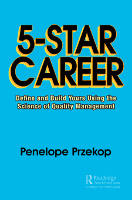
Image from Pixabay
Understanding and accepting yourself at an authentic level is key to reaching your potential. Misconceptions about creativity can slow or derail progress in multiple areas of life.
Most of us knew who the creative kids were. They were busy drawing three-dimensional doodles, wearing the craziest outfits they could come up with, and building popsicle stick structures during recess, right? Perhaps you were that kid, busy mastering art and music while the regular kids focused on grammar, history, math, science, and even literature, some of us with heads perpetually stuck in books.
I grew up believing that my creativity was exclusive to writing. I didn’t fit the creative kid mold. I viewed myself as part of the liberal arts versus science-minded set. I had a logical side, which kept me out of the creative bucket.
In college, I fortuitously recognized the incredible creativity found in nature, which began a slow shift in mindset. I took more art history courses than required, yet still assumed I was someone who looked at art rather than created it.
I still believed I was destined to fit into one of the molds I’d been shown growing up. Ultimately, misconceptions about creativity left me confused about my own capabilities and interests and slowed my progress.
Here’s five misconceptions that tripped me up:
Misconception 1: Creativity is about art
Creativity is about creation, regardless of what is created. It’s not limited to what we consider traditional art.
Dictionary.com defines creativity as “the ability to transcend traditional ideas, rules, patterns, relationships, or the like, and to create meaningful new ideas, forms, methods, interpretations, etc.; originality, progressiveness, or imagination.” The Merrium-Webster Dictionary provides these synonyms for creative: clever, imaginative, ingenious, innovative, original. Art is not mentioned in either. Creativity is about much more than art, and art can lack creativity, even when executed perfectly.
The ability to create something that transcends the traditional, ordinary, average, etc. is a powerful drive that, for many people, requires an outlet.
Misconception 2: Individuals are either left-brained (logical) or right-brained (creative)
Why is it that we tend to bucket kids into those who are more creative versus scientific-minded? I believe that this division is perpetuated by the misconception above. After all, if a kid enjoys art projects, they must be right-brained person. Since they’re creative, they will likely struggle with math and science so they should avoid a STEM career. Following this nonsense, a kid who excels at math and science just isn’t the creative type and should be encouraged to stay the course. They are left-brain dominant; not creative.
A creative mind can excel at any job, in any field. I’m a highly creative person who ended up in the pharmaceutical industry in an area of expertise that is usually attractive to left-brainers. Early in my career, there were times when people looked at me as if I were crazy to suggest a creative idea in such an arena. It was years before I understood the nature of my creativity and the value it (I) had to offer to my field and my I industry.
Misconception 3: Highly creativity people struggle with logic
Logic and creativity are often regarded as opposites, yet the antonyms of logical include words like foolish, irrational, unrealistic and obscure. My guess is that, throughout history, less creative folks decided that those who aspired to paint, dance, and sing were irrational, given the goals everyone should have. This perception likely led to labeling them as eccentric, high maintenance, or otherwise a tad kooky.
There are eccentric, high maintenance, kooky people who aren’t creative at all. In fact, they can be so uncreative that they become stuck in the ideas and beliefs about all kinds of things.
Misconception 4: Science is based on reality and refusing to accept reality fuels creativity
Reality is what it is, and it is rooted in objective facts; information that cannot be refuted. Creativity is the ability to transcend the current reality (traditional ideas, rules, patterns, relationships, or the like,) and create a new one.
If we consult linguistics, we find that the opposite of creativity is reality not logic, science, or math. Reality refers to something that actually exists or happens. But wait! We all know people who disagree with, can’t understand, or refuse to accept reality. This can happen for several reasons, including a misunderstanding of subjective (opinion) and objective information, and even mental illness. An inability or refusal to accept reality is not the mark of a creative mind.
Logic, science, and math are tools used not only to identify the reality but to also create new realities through the application of creativity just as art supplies are tools used to transform a blank canvas into a work of art through the application of creativity.
Misconception 5: Creativity is fixed; you either have it or you don’t
Some people are more naturally creative than others, just like some are more naturally athletic. However, both athleticism and creativity involve skills that that can be strengthened over time. Perhaps the first step is to toss out all your misconceptions about creativity and ask yourself what’s important to you.
You get to decide what you want to think about and spend time doing. It’s not always easy to truly define one’s authentic self but once you begin focusing on that, you’ll be on the path to deciding just how creative you want to be. Then commit to being who you are and working on who you want to be. That’s creative. You can redefine the reality you see in the mirror today … if you want to.
Creativity and logic are both required to form and create something new, even if it’s a new you. Don’t let your misconceptions to hold you back.
Copyright 2022. All Rights Reserved.
Book by this Author:
5-Star Career: Define and Build Yours Using the Science of Quality Management
by Penelope Przekop
 We live in a world obsessed with ratings. We prefer to purchase 5-star products, read 5-star books, eat at 5-star restaurants, and watch 5-star movies.
We live in a world obsessed with ratings. We prefer to purchase 5-star products, read 5-star books, eat at 5-star restaurants, and watch 5-star movies.
5-Star Career: Define and Build Yours Using the Science of Quality Management provides common sense, strategic context for personally implementing quality concepts that reflect your goals as well as your own definition of a 5-star life and career.
For more info and/or to order this book, click here. Also available as a Kindle edition.
About the Author
 Penelope Przekop is a corporate quality management expert, entrepreneur, and writer. Throughout her over 30 year career, she has worked with numerous Fortune 100 pharma companies, including Pfizer, Merck, Lilly, and Glaxo Smith Kline, and held leadership positions at Novartis, Covance, Wyeth, and Johnson & Johnson. She is the founder and CEO of PDC Pharma Strategy and serves as the Chief Compliance Officer for Engrail Therapeutics.
Penelope Przekop is a corporate quality management expert, entrepreneur, and writer. Throughout her over 30 year career, she has worked with numerous Fortune 100 pharma companies, including Pfizer, Merck, Lilly, and Glaxo Smith Kline, and held leadership positions at Novartis, Covance, Wyeth, and Johnson & Johnson. She is the founder and CEO of PDC Pharma Strategy and serves as the Chief Compliance Officer for Engrail Therapeutics.
She is the author of Six Sigma for Business Excellence (McGraw-Hill) and four novels: Please Love Me, Aberrations, Centerpieces, and Dust. Penelope earned a BS in Biology from Louisiana State University and an MS in Quality Systems Engineering from Kennesaw State University. She is a graduate of the Smith College Program for Women’s Leadership and the Rutgers University Senior Leadership Program for Professional Women.
Visit her websites at PenelopePrzekop.com and pdcstrategy.com.

























